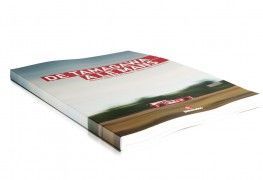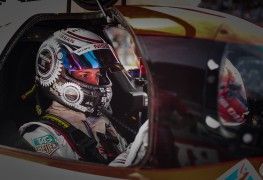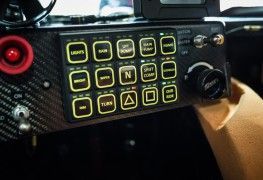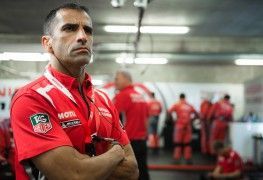For the 1992 season, Nissan had decided to concentrate exclusively, ostensibly (you'll see why below), on the Japanese endurance championship, with the idea of building on what they had learned with the R91CP. After winning the Japanese championship in 1990 and 1991, the R91CP received minor cosmetic detail modifications to improve its aerodynamic efficiency, and minor tweaks to its twin-turbo V8 engine to improve power delivery and reliability.
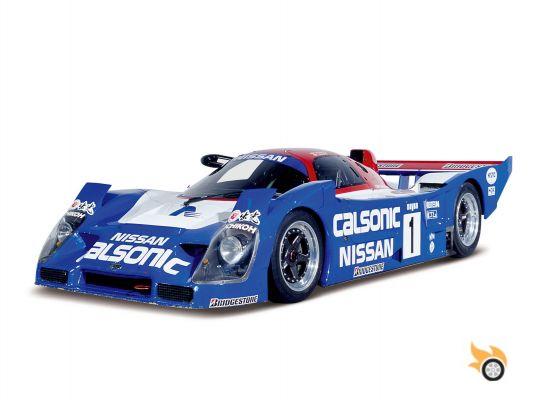
The R92CP was the culmination of the original carbon fibre R90 design, winning Nissan its third consecutive Japanese endurance championship.
With these small changes, Nissan changed the name of the car, which in broad strokes was still an R91CP, to be known as R92CP. The sporting journey would be equally brilliant as for its direct predecessor, after managing to win five of the six races contested, getting for Nissan the third consecutive Consutructors' Championship, accompanied by the drivers' title.
On paper, the V8 was by then maintaining its 800 horsepower for racing "and just over a thousand" for qualifying. In special tests at Nissan's US facility, the car had been able to lap at 396 km/h! thanks to aerodynamic development by Yoshi Suzuka.
Suzuka had started out as an engineer for Nissan at Electramotive, evolving the original design of the Lola 810 into the dominating GTP ZX-T. Such were his achievements that Nismo hired Suzuka to go on to develop the R90 series and its successors in Japan. But unexpectedly, a call would send Suzuka back to California, to work on a secret project.
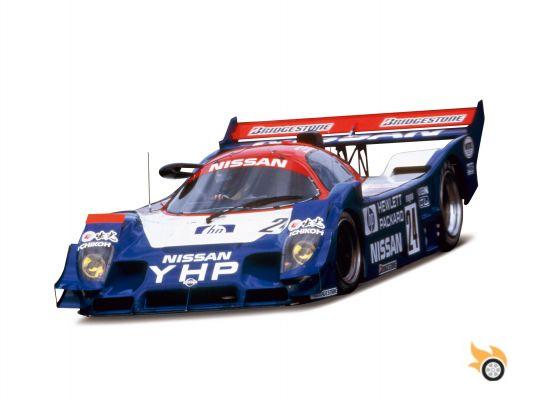
Yoshi Suzuka was the aerodynamic architect of the successful GTP ZX-T and worked on the evolution of the R90.
As you may recall, Nissan had left the World Endurance Championship after Ecclestone's proposed rule change to three-and-a-half-litre naturally aspirated engines identical to those in Formula 1, with the sole idea of protecting his own private interests as a promoter of the Grand Circus.
While officially Nissan was still angry and had no intention of racing at Le Mans, the success at the 24 Hours of Daytona, and the feeling that the cars designed by Yoshi Suzuka were truly contenders to win it all, the Japanese gave the green light to the development of a new racing prototype in secret.
The new car, to be called P35 in the first instance, was to be fitted with an engine in accordance with the new WEC regulations, and would serve as a Group C car both for Le Mans and for racing in the United States in the IMSA-organized championship.
The heart of the car was the first fully developed part. Under the name VRT35, the new engine was a twelve-cylinder engine with 70 degrees between banks (as opposed to the more traditional V10 used by Peugeot and Toyota at Le Mans), with three and a half liters of displacement, designed with ultra-short stroke, looking for the maximum possible rotational speed (83×44). It had four valves per cylinder, double camshaft distribution per bank and cylinder head and aluminum alloy block.
Its engine speed at maximum power was 12,000 rpm (the engine could turn faster, but it was an endurance engine, so you had to put up with it). Its sound was simply spectacular (the video above will prove it and leave you stunned), reminiscent of Ferrari's best V12s in F1.
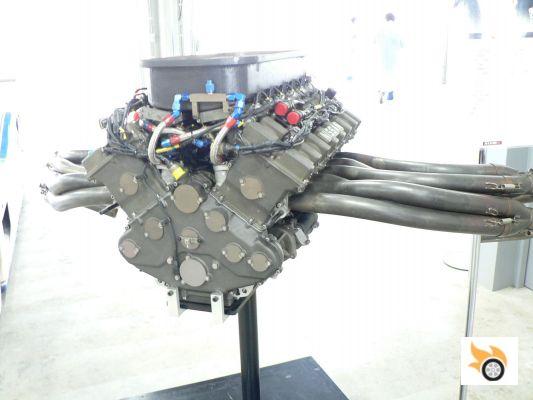
"VRT35 NP35 001" by 160SX - Own work. Licensed under CC BY-SA 3.0 via Wikimedia Commons.
The engine's problems were that, by design, it had to deliver 630 hp and a maximum torque of 395 Nm at 9,200 rpm, but in reality it was around 520 hp in its first specification, despite its great sound.
Aerodynamically and chassis-wise, the car was completely new. NPTI, the converted Electramotive, Nissan's official team in the United States, designed an all-carbon fiber monocoque, with the roll bars built in composite, tremendously rigid as a base, and using the engine as a structural element.
Suzuki created the wildest aerodynamic package of the era. Ultimately this was the last Group C ever developed, and probably the most aerodynamically efficient. To achieve this, a huge venturi effect tunnel was used. The rear suspensions, which like the front ones were double wishbones, had the lower wishbone raised so as not to interfere with the aerodynamics of the tunnel, which improved high-speed grip, while the cantilever rear wing separated from the main body not only served to provide downforce, but also to better suck in the air coming out of the diffuser, in turn blown by the V12's exhaust system.
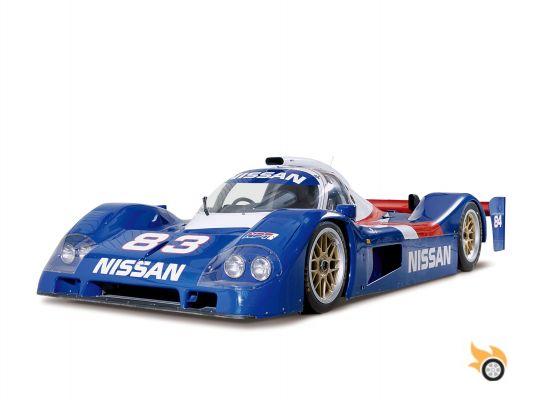
NPTI developed a car with aerodynamics designed for minimum drag, maximum efficiency and maximum possible payload.
Interestingly, the first two development prototypes used a mixed aluminium-carbon chassis, but the third unit was able to switch completely to composite fibres. The wheelbase was 2,870 millimeters, 70 more than the R90CP and its derivatives, looking for more aerodynamic surface to work on for the tunnel, and also more stability at high speed.
The wheels started with 17-inch rims, to end up mounting 18 on the rear axle after the first tests. The brakes were carbon-ceramic, bitten by rigid four-piston calipers, while the gearbox, for the first time, was a development entirely made by NPTI in the United States, with six sequential drive ratios. The creation of a proprietary gearbox also made it possible to design a housing on which to anchor the suspension just where NPTI wanted it, to improve the car's aerodynamics.
Being a naturally aspirated car, the P35 opted to mount its single main radiator at the front of the car, instead of using the typical side radiators to date. Not having large intercoolers or large oil cooling requirements, as was the case with turbo cars, had its advantages for the design.
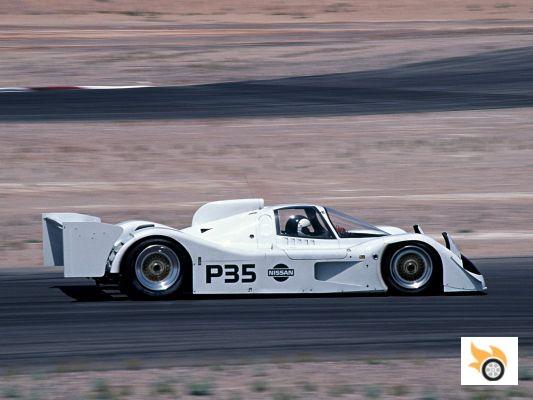
The P35 in testing in the United States
The first tests of the car quickly showed the good and the bad of the P35. On the one hand, aerodynamically the car was great, with a very fast cornering and great stability, supported by a rigid chassis. But when it came down to it, the drivers found that the car lacked a lot of power. In the order of at least 110 horsepower. The aerodynamic design had been made taking for granted the original promises of the engine, and when they found that there was not enough horsepower, the car was overloaded, which subtracted a lot of top speed.
After several test runs, an accumulation of circumstances would serve as a reason for the cancellation of the project. On the one hand, the crisis of the early nineties hit Nissan hard. On the other hand, the endurance world championship was losing interest, in favor of F1, and with problems due to the crisis. The result was Nissan's decision to abandon its bid for the WEC, and more specifically for Le Mans.
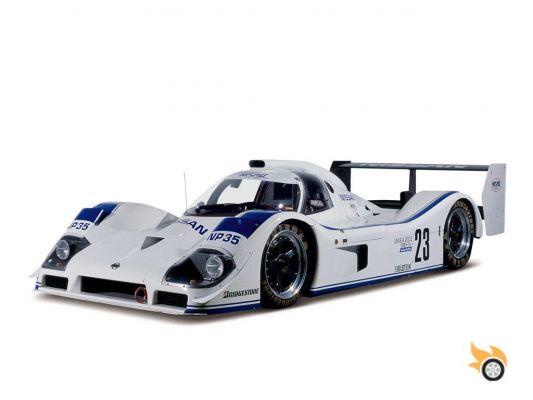
Nismo started from the Yankee P35 to create the NP35, with more power and downforce, but it only raced once.
Based on the P35 design, Nissan created the NP35, a car that shared the same chassis, but used a different gearbox, a different rear suspension and more downforce, with the aim of competing in the Japanese endurance championship. The V12, moreover, being used for short tests instead of endurance, could be pushed further to around 620 horsepower.
But again the crisis struck, and the Japanese endurance championship was cancelled for 1994. The NP35 would only take part in the last race of 1993, being the slowest car on the grid (curiously the R92CP above dominated in the lap times of that same race).
The last effort of the car was to try to convert it for the IMSA GTP championship, but when Nissan was preparing to modify, in mid-1993, the P35 chassis for the 1994 season, IMSA announced that its endurance championship would stop running GTP cars, which caused the Japanese company to cancel the project and cut the support to NPTI, which would keep one of the chassis and try to run it under the name of X-250, without success.
The other two chassis, one converted into the NP35, and the other an original P35, now rest in the storage facilities that Nissan has in Zama.
The return of Alfa Romeo: from the 1900 to the Giulia